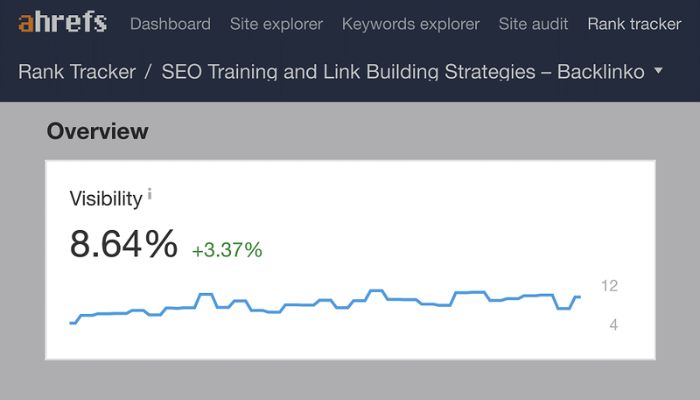You have a mass tort case.
You have the expertise.
You have the knowledge.
You even have the target demographics.
But if you’re going to be successful, you need to find a way to make your law firm visible and attract more leads with the potential to become clients.
Obviously, there are many marketing and advertising strategies that can help you do this. If you have enough money to spend, you can easily reach millions of people and build a steady flow of inbound leads.
The problem is, not all mass tort marketing strategies are equally effective.
And if you’re not careful, you could end up spending more money than you make from your efforts.
One of the best solutions is practicing SEO for mass tort lawyers.
But what exactly is SEO for mass tort lawyers? And how do you practice it?
Table of Contents
What Is SEO for Mass Tort Lawyers?

Mass tort SEO (search engine optimization) is a series of strategies and tactics designed to increase the rankings of your website pages in search engines like Google. Put in enough effort, and your website will become the top-ranked site for keyword searches that are highly relevant to your audience and your law firm.
Already, you can begin to see why this is valuable. If your website outranks the websites of your competitors, people searching for information related to your mass tort will come to you first. Given the modern reality in which most people search for a topic before they take action on it, this is even more valuable.
The Benefits of Mass Tort SEO
Mass tort SEO holds several benefits for the lawyers and law firms who practice it:
- Search visibility (and brand visibility). The first and potentially most obvious benefit is greater search visibility, and along with it, greater brand visibility. People conducting searches related to the mass tort are likely looking for information or are curious about the subject. Either way, if they see your brand name first, they’ll be much more likely to remember it. Conversely, if people literally can’t find you in search engines, they may not associate you with the tort at all.

- Organic inbound traffic. Most SEO practitioners treat organic traffic as their highest objective priority. Organic traffic is the amount of traffic generated from organic searches; ranking higher in search engines means more people will see your website and click through to visit your web pages. At a high enough scale, this can generate thousands – or even tens of thousands of new visitors every month. Even better, these visitors should be highly relevant to your law firm SEO, since you already know they were searching for terms relevant to the mass tort.
- Peripheral sources of traffic. Organic traffic is the main priority of most mass tort SEO campaigns, but many of the tactics you practice for SEO will have the incidental benefit of generating peripheral forms of traffic. For example, link building is a critical aspect of SEO; it passes authority, allowing your website to rank higher, but it also introduces a path to more referral traffic generation.
- Specialized destination pages. Practicing SEO gives you an opportunity to create specialized destination pages, including blog posts, white papers, case studies, and general landing pages, tailored to your target demographics. This allows you to funnel people in highly specialized streams to highly relevant pages, so you can better market to them once you capture their traffic.
- Persuasive onsite content and CTAs. People who visit your website after discovering it in search engines will likely want to read your content. This presents an excellent opportunity to persuade your audience and get them to act the way you want. Accordingly, your onsite content should be fitted with calls to action (CTAs) designed to motivate readers to take a specific action (like filling out a form with their contact information or scheduling a time for a consultation). Technically, conversion optimization is a concept distinct from SEO, but because they’re mutually beneficial and reciprocally supportive, it’s wise to speak of them as if they’re part of the same overall strategy.
SEO is also incredibly beneficial for mass tort lawyers because it’s cost effective. These are just some of the reasons why it’s so cost effective, especially when compared to other marketing and advertising strategies:
- Low barriers to entry. There’s practically no barrier to entry for SEO. If you have a website and you know what you’re doing, you can get started right away – with no partnerships, connections, or existing assets strictly necessary. Learning SEO isn’t especially difficult, especially with the abundance of educational materials now available online, and if you do need support, a qualified SEO agency can easily help you. Hiring professionals is more expensive than doing it yourself, but paying for professional SEO services is still cheaper than most traditional advertising campaigns.
- Competitive opportunities. SEO is also highly cost effective because it gives you the opportunity to mitigate or eliminate competitive pressure. Because you’ll be targeting highly specialized keywords and phrases, you can immediately cut your competition to the absolute minimum. If you do have competitors in this narrow space, you can usually supersede them with better content and a more thoughtful strategy.
- Permanent resource development. The resources you create for mass tort SEO are going to be permanent, or nearly so. The blog posts you write for SEO are going to continue providing information to people and converting people for years to come. The links you build can keep generating traffic indefinitely. Whatever landing pages and persuasive materials you create will continue providing value to your brand as long as you keep using them.
- Hands-off intake. SEO is an inbound marketing strategy, and one of the brightest appeals of inbound marketing is that intake is mostly hands-off. Instead of spending time, effort, and energy on every single lead that comes in, you’ll funnel most of your leads into a process that’s largely automated. Your leads will fill out forms, schedule appointments, or take other actions that require little to no intervention on your part – and they’ll already be highly qualified.
Elements of SEO for Mass Tort Lawyers
So how exactly are you supposed to practice SEO for mass tort cases?
Effectively, you want Google and other search engines to prioritize your content over the content of your competitors. The only way to do this is to demonstrate that your content is both more relevant and more trustworthy than competitive pieces of content. Obviously, you’ll also want to orchestrate your SEO tactics in a way that’s relevant to and valuable for your business.
With that in mind, these are the most important elements that the best law firm SEO agencies to master.
- Keyword targeting and high-level strategy. Everything starts with your high-level strategy, and with it, your keyword and phrase targeting. Before you begin practicing SEO, you should have an idea of how you want to distinguish your law firm in the mass tort world and what types of people you want to target. Once you have a list of high search volume and low competition keywords, you can begin developing your strategy to focus on them.
- Onsite content development. Content has always been the heart of SEO, and it continues to be the most important element besides initial targeting. That’s because content does three things simultaneously: it increases your relevance by allowing you to optimize for keywords, it increases your authority and trustworthiness by demonstrating competence, and it also gives you an opportunity to persuade your readers and call them to action. Your content needs to be original, valuable to your readers, detailed, accurate, and readable.
- Onsite optimization. Onsite optimization is all about making tweaks to your website so that it becomes more authoritative and more relevant. This includes strategic moves like optimizing page content, tweaking meta titles and descriptions, and even changing your layout and navigation.
- Technical SEO. Websites that perform better and more reliably have an advantage in mass tort SEO. That’s why it’s important to practice technical SEO as well, optimizing for mobile devices, improving page loading speed, and controlling for other factors.
- Offsite content and link building. All these website changes can boost your authority, but only to a point. If you want to establish more trustworthiness and credibility, you need to build links – and the best way to do that is with offsite content. Any deviation from best practices here can land you a penalty, so be careful.
- Local citations, reviews, and more. Mass tort lawyers sometimes choose to pursue local SEO strategically, as it’s a way to minimize competition and increase relevance with an audience in a particular geographic region. Local SEO is very similar to national SEO, but it introduces a focus on local citations, reviews, and a handful of other locally relevant factors.
Building a Website for Mass Tort SEO
At the center of your mass tort SEO campaign is going to be your website. After all, it’s where you’re going to be driving all your traffic – and it’s the artifact that Google and other search engines are going to be evaluating.
These are some of the most important things to address:
- Structure and navigation. Try to structure your website and organize your pages in a way that makes intuitive sense. Your navigation should be rigorously organized into categories and subcategories, so both users and search engines have an easy time understanding the relationships between pages.
- User experience. The better your user experience is, the more you’ll be rewarded in search engine rankings. That means practicing people-first copy and web design, sacrificing aesthetics and personal preferences in favor of delivering the type of website that people actually want to use. If you have pop-up ads, you should use them extremely sparingly. Your website should also be optimized for mobile devices, as most web traffic now comes from mobile devices.
- Loading and performance. Similarly, you should update the technical side of your website to improve loading speed and overall performance. Broken or poorly loading content areas lead to less favorable impressions from users and can hurt your SEO results as well.
- Security. These days, it’s a best practice to get an SSL certificate for your website for the security of your users. It’s inexpensive and easy to install, so there’s no reason not to do it.
Similar to SEO for personal injury lawyers, mass tort SEO typically involves a similar process, but the number of car accidents in a given local market typically far outweighs the total volume of searches for some niche mass tort cases which have high competition (think mesothelioma).
Your strategy on how you approach search engine optimization after building your website will depend on things like:
- search volume for the tort case
- average payout per case
- conversion rate
- legal case closure rate
This will help you gauge your budget for creating an SEO campaign.
Creating Effective Content for Mass Tort SEO
As we’ve already established, content is the real heart of any mass tort SEO campaign.
So what should you consider when developing onsite content for your law firm?
- Relevance/optimization. Your onsite content should be valuable to your readers as well as optimized for your most strategically valuable keywords and phrases. This way, it’s highly relevant to your target audience and capable of supporting higher rankings in results pages.
- Approachability. Content should also be highly approachable. Write for the average person, rather than for the average mass tort lawyer. Many of the people discovering your law firm and the mass tort case for the first time are going to need an entry-level experience.
- Expertise. This is a chance for you to demonstrate your expertise. If you write well and provide value, you’ll be rewarded by Google and other search engines; users will also have more trust in you after engaging with this high-quality content.
- Originality. While there are some details that bear repeating across different law firms and publication channels, you should also strive to create original content. Produce materials that competing law firms have neglected.
- Readability. Readable pieces of content tend to perform much better than their counterparts. You can make your content more readable by simplifying your vocabulary, adding more spacing between sentences and paragraphs, integrating formatting like bold and italics, and grouping points into bullets and numbered lists.
- Value. Every person reading your content should walk away with new knowledge and more confidence. In other words, your mass tort content should be genuinely valuable to readers. If you’re not sure whether your content is truly valuable to your target audience, use surveys or focus groups to clarify this ambiguity.
- Persuasiveness. Ideally, your content will also be persuasive; it should convince readers that it’s in their best interest to take action on this mass tort case and reach out to your law firm. If your content is already authoritative, informative, and easy to understand, half the work will be done for you; you’ll just need to close the deal with a convincing CTA that drives people to your ideal destination (like a specific landing page or a form to complete).
Building Links for Mass Tort SEO
Links pass authority from an external site to your site, giving you the ability to develop higher perceived trustworthiness as a result of external votes of confidence. However, Google and most other modern search engines are extraordinarily picky about how they consider links. If you want to get value out of your links, and avoid penalties, you’ll need to be strategic and discerning about the links you acquire.
- Domain authority. Domain authority is, essentially, a measure of the trustworthiness or credibility of a given site. The higher the domain authority of the referring domain, the more value you’ll get from the link established on it. That said, it’s generally harder to work with publishers at the higher end of the domain authority spectrum, so most practitioners of mass tort SEO start with smaller, lesser known publishers and gradually work their way to bigger, more valuable ones.
- Content quality. Good link building strategies are built around good content. Supporting your links with quality, genuinely valuable content is one of the easiest ways to secure permanent links with little to no risk for your brand.
- Link relevance/value. Link relevance also matters. The best links are ones that provide genuine value to readers, rather than simply filling a void for the purpose of generating higher domain authority. Links that provide additional information, citations for specific facts, and related reading are especially valuable. Your links should also be valuable to the content housing them and to the publisher supporting them.
- Frequency and strategic positioning. You’ll also need to think about the frequency and strategic positioning of your link building. Ideally, you’ll gradually build a portfolio of inbound links from different sources. Building too many links, building too quickly, or building with irrelevant sources could compromise your results or even earn you a penalty.
Analyzing Results for Mass Tort SEO
All of these tactics should, collectively, support higher rankings and more organic traffic for your law firm in pursuit of more mass tort clients. However, if you’re flying blind and nakedly assuming that your tactics are working, you’ll be limiting your full potential.
The better approach is to practice diligent data analytics, studying your results so you can learn from them and adapt. Pay close attention to objective measurements like search engine rankings for your target keywords, organic traffic, referral traffic, and even conversion rates. Even if you don’t have much experience in this field, you should be able to figure out whether your tactics are working, how much momentum you’ve established, and what types of changes might lead you to an even higher ROI.
SEO for Mass Tort Lawyers: Getting Professional Support
This guide is a relatively long read.
And yet, it’s just a primer on SEO for mass tort lawyers.
SEO can be very complex – and confusing, especially to newcomers.
But you don’t have to do this alone.
With the help of a professional SEO agency, everything from high-level strategy to ground-level technical SEO optimization becomes much, much easier.
We have helped some of the most prominent law firms, from estate planners to personal injury, maximize their lead flow with SEO.
Are you ready to start the conversation?
Reach out to SEO.co today!
Tim holds expertise in building and scaling sales operations, helping companies increase revenue efficiency and drive growth from websites and sales teams.
When he's not working, Tim enjoys playing a few rounds of disc golf, running, and spending time with his wife and family on the beach...preferably in Hawaii.
Over the years he's written for publications like Forbes, Entrepreneur, Marketing Land, Search Engine Journal, ReadWrite and other highly respected online publications. Connect with Tim on Linkedin & Twitter.
- Content Marketing: Using Content & SEO to Grow Your Business [Complete Guide] - October 23, 2024
- SEO for Labor and Employment Lawyers: Top Tactics to Rank - October 4, 2024
- How to Find & Fix Duplicate Content on Your Website - September 24, 2024



